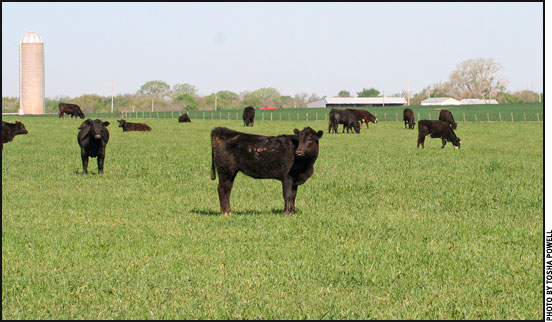

Dillon Feuz
In the Cattle Markets
Returns to a summer stocker operation.
On a weekly basis, I utilize Nebraska feeder-cattle auction price data, the current futures market for both live cattle and feeder cattle, and the present cost of gain based on current feed prices to project returns to backgrounding various weights of feeder steers and to finishing various weights of feeder steers. For the past several weeks, I haven't found many opportunities for positive returns in either of these cattle-feeding endeavors.It appears, in spite of the very optimistic futures market, cattlemen are even more optimistic at the sale barn, and they are paying more for feeder cattle than can be justified with present futures prices. Now, perhaps they have contracted cheaper feeds and they can afford higher feeder-cattle prices. It may also be the case that prices of feeder cattle and fed cattle will increase more in the future than the present futures market expects, and this could also result in positive returns.
However, as green grass is starting to appear in some areas, I looked at placing feeder steers on pasture for 120 or 150 days to see if one could expect a positive return from this enterprise. I used this past week's Nebraska auction market prices and then assumed the calves would be fed a cheap maintenance ration until May 1. I assumed a grazing cost of $20 per head per month, and assumed some other operating costs (vaccines, implants, interest, death loss, miscellaneous supplies and a little hay to get to May 1) that varied from $62 to $68 per head. I then used the August and September feeder-cattle futures and historical basis values to predict yearling steer prices for this fall.
I assume that calves gain 1.75 pounds (lb.) per day if they are pastured for 120 days. That is just more than 200 lb. for the summer. And I assume that they gain 1.65 lb. per day if they are pastured for 150 days, or 250 lb. I looked at placement weights of 550 lb.-750 lb.
Results indicated that you should be able to see a positive return to a summer stocker operation. The highest return of $105 per head was for 750-lb. steers pastured for 120 days. Returns for the lighter 550-lb. steers were $26 and $37 per head for the 120- and 150-day pasture scenarios, respectively. Returns to the 650-lb. steers were between those for 750- and 550-lb. steers.
If you can find grass, and if you can find feeder cattle that you don't have to break the bank to purchase, take a look at a stocker operation. The returns to grass this summer will likely exceed the returns you can find in a feedlot over the next few months. If you want to plug in your own values, I have a very simple online calculator that can help you do this. It is located at http://cattlemarketanalysis.org/stocker.html.












